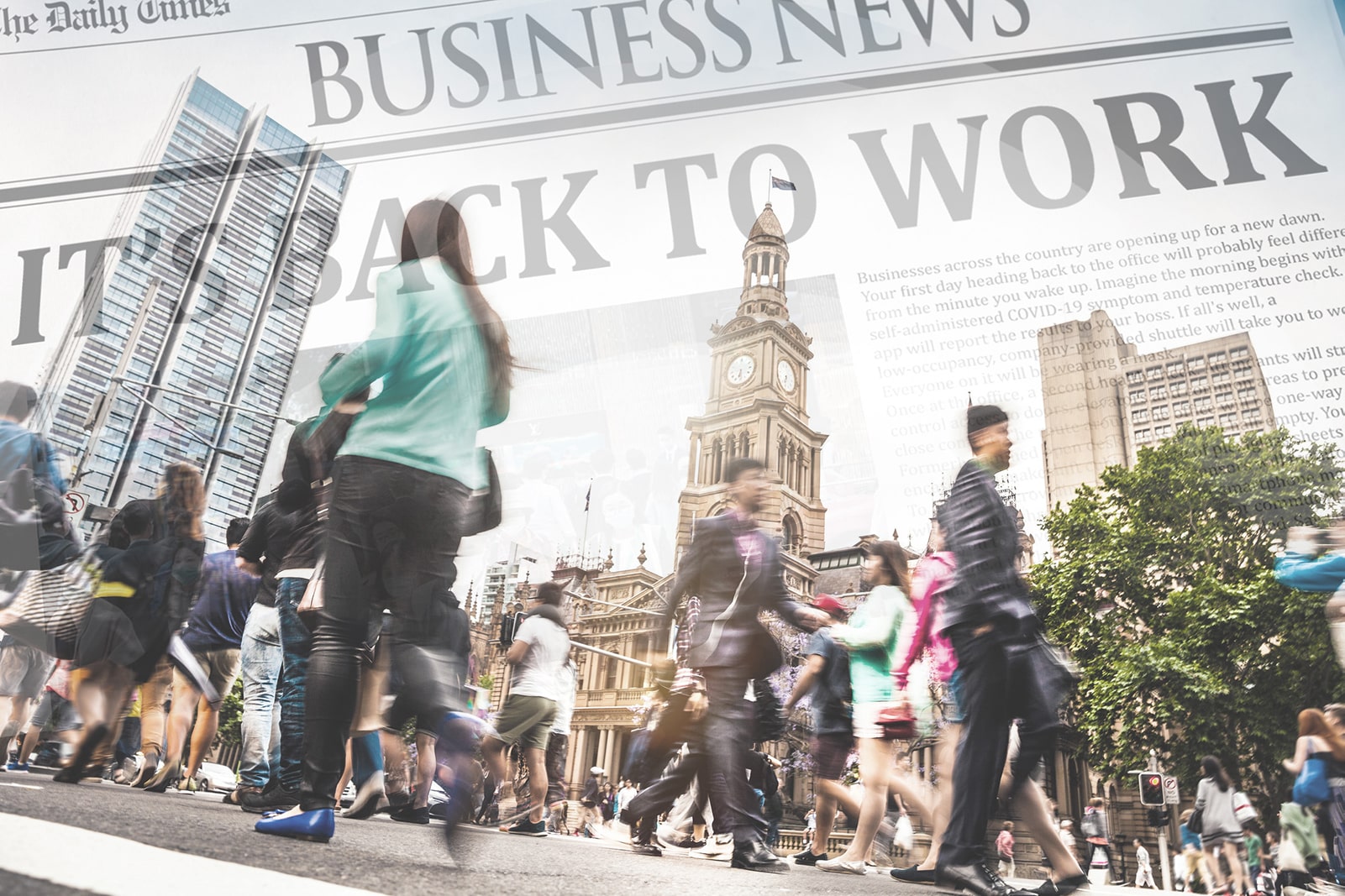
A guide to the safety-first approach to the new BAU
Fortunately, we are now seeing some light at the end of the tunnel when it comes to the COVID-19 isolation, lockdown and social distancing restrictions. After weeks of enforced isolation and working from home, many employees are desperate to get back into their office and back to their colleagues, but are just as concerned about the potential impacts on their health.
We believe a cautious, yet decisive approach is essential to ensure you show due diligence to your employees’ physical and mental health, consisting of three, concurrent focus areas.
- Manage the return
After weeks of enforced isolation, there will understandably be trepidation and uncertainty about a return to the workplace, from employees and their families. The concern for health and safety must be two-fold. Firstly, providing information and support to those affected will be critical to encouraging a return to work mentality before it can happen in earnest. Programmes proactively providing information and making resources available to address concerns and questions should be implemented before expecting employees to comfortably return. Secondly, careful monitoring of employees and their mental and physical health is critical once the workplace is back functioning ‘as normal’ and a degree of understanding will be needed as your teams adjust to a new normal.
- Workplace health and safety in the spotlight
Undoubtedly government measures will be enforced that determine the how, what and when of multiple employees returning to workplaces. Whether it is alternate teams on alternate days, regular/daily temperature tests or mandated working-from-home quotas, business leaders simply must be prepared to adapt their operations for what may lie ahead, especially when it comes to resourcing and budgeting.
In addition, there will inevitably be cultural shifts, as employees who have been forced to work from home can now present a solid business case as to why they are no longer required to be in the company workplace. In turn, what are the implications of such a policy shift? Less commuting means less chance of exposure to the virus, but what does it mean for productivity and how can you monitor output without invading privacy? Clear communication, adaptability and importantly, company culture will all have a role to play in implementing these changes.
- Beyond the workplace
Many will imagine that their responsibility to their employees starts and ends at the front door of their workplace, it may pay to look beyond to maximise employee and company care. For some, this may take the form of providing gloves, masks and sanitiser for their daily commute, out of hours support resources or even enhancing home offices. By demonstrating an understanding of the potential for the virus to have an impact beyond the 9-5, you are more likely to have healthy employees and strengthen the relationship between them and your business.
While far from a comprehensive checklist, preparing for and acting on these three areas will give your business and most importantly your team, the best chance of returning to a safe, productive and positive workplace.




